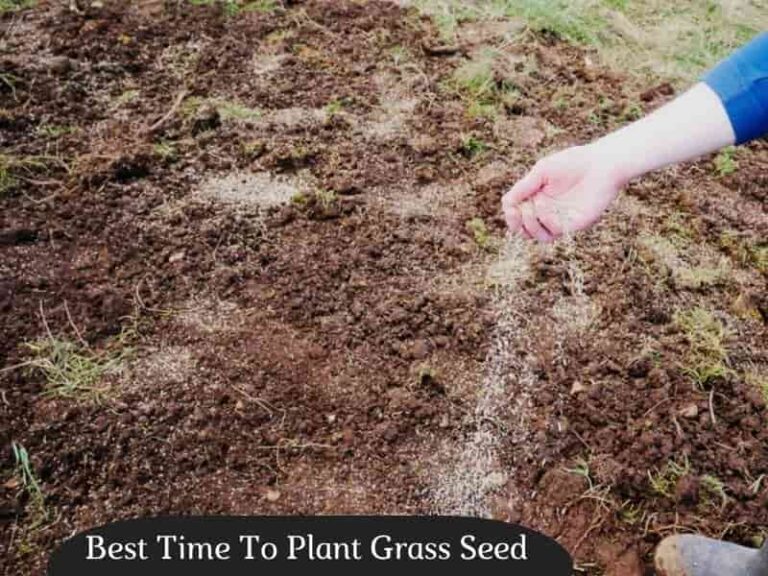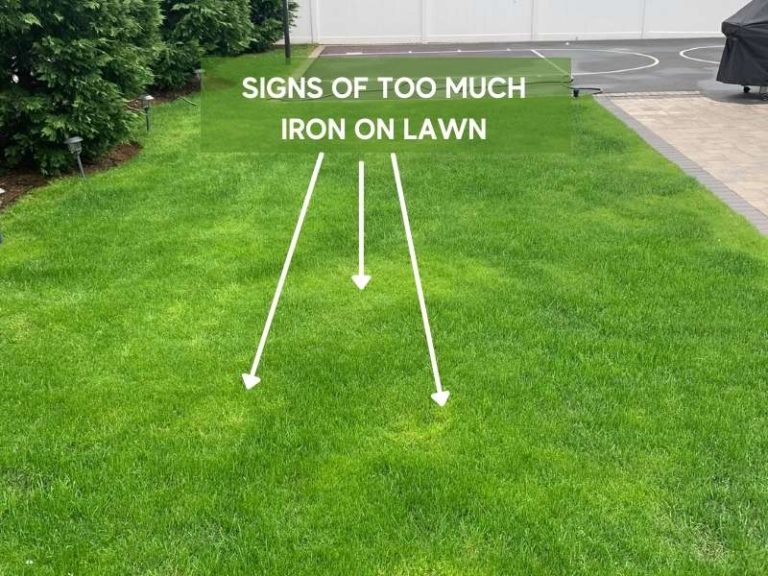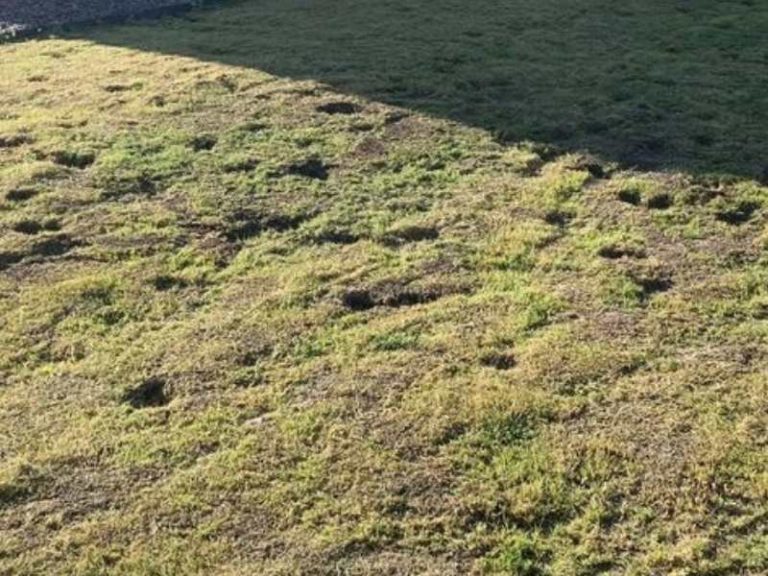How to Overseed a Lawn Without Aerating
Lawn restoration is a vital part of making sure your lawn looks lush. Overseeding is a non-intrusive technique of improving your lawn’s green appeal. The best bit about it is that you don’t have to aerate to get an even surface of fresh grass.
Overseeding your lawn without aeration is a 5-step procedure. Follow this procedure with regard to your lawn size.
- Mowing
- Raking and debris removal
- Spread the new grass seed
- Apply fertilizer
- Water the lawn
We recommend aeration before overseeding. However, you can always explore alternative methods to revamp your lawn. Below, I’ve elaborated the benefits and the procedure on how to overseed without aerating to give your lawn a lush green surface.
It is possible to overseed a lawn without aerating it, especially when the soil isn’t compact and can allow passage of essential water, nutrients, and air circulation needed to germinate grass seeds.
All you have to do is prepare the lawn by mowing and dethatching, then spread the seeds and water them lightly regularly to grow them.
How to Overseed Without Aerating
Turf thins out and develops bare spots because of heavy foot traffic over time leaving the lawn susceptible to weeds, pests, and diseases. Furthermore, the yard looks dull and unsightly.
Overseeding is spreading new grass seeds to an existing lawn. It covers the exposed bare spots and gives the lawn a crisper, greener look.
Overseeding to cover bare spots also chokes weeds.
When is the best time to overseed a lawn without aeration
The best time to overseed warm-season grasses like Bermuda grass and zoysiagrass is late spring but early fall for cool-season ones such as tall fescues. Time for when the day temperatures are warm with cool nights to provide a favorable environment for grass seeds to germinate.
It’s not advisable to overseed in summer or winter because of the harsh weather conditions that are unfavorable to seed development.
Steps: How to Overseed Your Lawn Without Aerating
Ensure you overseed with grass seeds similar to the existing turf on the lawn to avoid incompatibility issues. Use grass seeds of better quality that blend well. Mixing blends improves the lawn’s capability to withstand heat, drought, pests, and diseases.
Here’s how to overseed the lawn without aerating:
1. Mow the lawn
Cutting tall grass helps the seeds reach the soil easily without being trapped by the turf. Short grass allows sunlight to penetrate and reach the ground for seed germination. You also prevent grass and weeds from competing with the grass seeds for nutrients and water. The seeds, therefore, thrive from the most nutrients and sunlight.
Cut the grass shorter than 2 inches tall; the best height is 1-1 ½ inches. Don’t cut the grass too low to avoid scalping the lawn.
When mowing, use a catcher to bag the grass clippings and take them to a compost pile. Leaving grass clippings when overseeding is not recommended because the seeds would get trapped and not grow.
2. Rake, thatch, and remove debris
Thatch are dead stems, leaves, roots, and sticks lying on the lawn. When overseeding, you want the seeds to get optimum water, oxygen, and nutrients. Clearing thatch and debris ensures there’s no barrier between the seeds and the soil.
Rake thatch thicker than ½ inch using a power rake or a dethatcher. Clear debris from the lawn to make the soil more accessible.
A moderate thatch, less than ½ an inch, is beneficial to the yard. It decomposes to release nutrients into the soil. It also retains soil moisture, thus keeping a cool environment around the grass.
However, thatch thicker than ½ an inch creates a barrier that prevents water, air, and nutrients from penetrating the soil and the roots.
3. Spread the grass seeds
Using a broadcast spreader or a drop spreader, add the seeds to the bare spots or areas of the lawn you’re overseeding. Remember to set the tools according to the manufacturer’s instructions.
Walk-in a straight line over the yard moving back and forth to spread the seeds. Spread approximately 4 to 5 lbs of grass seeds per square ft if you’re covering bare spots on the lawn. Otherwise, use the standard rate of 2 to 4 lbs of grass seeds per 1000 square feet. Walk in the opposite direction perpendicular to the one you started with for more coverage.
Mix grass seeds with sand and spread them manually by hand if you’re overseeing a small area.
Avoid covering the seeds with topsoil when you overseed. Topsoil buries grass seeds and stunts growth.
4. Rake in the seeds gently
After spreading the seeds, you want them to settle better in the lawn soil to prevent being washed, scattered, or eaten by birds.
Rake them gently in all directions to spread them evenly over the area.
5. Water the lawn lightly
Grass seeds need moisture, sunlight, and oxygen to grow. With a sprinkler attached to a garden hose, water the lawn lightly to prevent the seeds from floating on the water. Heavy watering erodes them.
Water 2-3 times daily with 1 inch of water for three weeks before the seeds grow and establish. Regular watering makes the soil moist, thus promoting growth.
Reduce watering times to twice or once per day as the seeds continue growing
Grass seeds take between 5 and 30 days to grow, depending on soil moisture content and grass type. Continue watering and mowing the lawn at 2 inches. can apply fertilizer after the seeds sprout in three weeks. a 10-10-10 NPK fertilizer would give you great results. Nitrogen helps the grass blades grow thicker and greener, while phosphorus strengthens the roots.
Benefits Of Aerating The Lawn Before Overseeding
You can produce a much thicker and healthier lawn if you aerate before adding the seeds.
Here are five reasons you should aerate before overseeding:
1. Aeration loosens compact soils
Tight soils have poor air circulation and don’t allow water and nutrients to reach the grassroots. Core aeration cuts and removes soil plugs, thus allowing more water, nutrients, and air to flow and reach the roots where they are needed.
2. Aeration breaks thatch
Aerating removes barriers such as thatch blocking vital elements from reaching the grassroots. If thatch is raked off and removed when it is thicker than ½ inch. Therefore, more oxygen, nutrients, and water can penetrate and reach the grassroots.
3. Aeration helps the grass grow thicker and healthier
When you loosen tight soils, you allow more water, nutrients, and oxygen to reach the grassroots. The roots grow deeper and stronger into the ground, thus improving its resistance to drought and heat. When grassroots intake nutrients, the plant grows more healthy, and the blades thicken.
4. Aeration improves air circulation
Core aeration pokes small holes and removes soil plugs, thus allowing air to pass through. Air circulation removes harmful Carbon IV oxide from the soil while oxygen is absorbed by the roots of the grass. Free-flowing oxygen supports the development of grass seeds.
5. Aeration improves soil drainage
Compact soils have poor drainage because they lack air spaces to allow water passage. Such grounds have water pooling on the surface or spilling off the slope after watering. Aerating compact soils create spaces that will enable water infiltration, thus improving drainage.
Should You Dethatch or Aerate Before Overseeding?
Dethatching and aerating are both beneficial to a lawn.
Dethatching involves removing thatch thicker than ½ inch from the lawn. A moderate thatch is good as it reserves soil moisture and decomposes to release organic matter to the soil. However, if it’s thicker than ½ inch, it prevents essential water, nutrients, and oxygen from reaching the roots of the grass. Unavailability of these elements creates a poor soil environment, and the roots may suffocate and die.
You want the seeds to get the optimum water, oxygen, nutrients, and sunlight to sprout and establish on the lawn when overseeding. But since thatch build-up creates a barrier, you must remove it before overseeding.
On the other hand, Aerating loosens compact grounds by punching small holes. Water, nutrients, and oxygen cannot penetrate when the soil is compact. If the seeds don’t get these essential growth elements, they won’t grow.
Aerating creates a passageway for these elements to promote seeds germination.
Dethatching and aeration are necessary before planting new grass seeds to optimize their chances of growth.
However, you may choose to aerate or dethatch depending on the thickness of the thatch and the level of your soil compactness.
Aerating is best done when the soil is very compact to loosen them. Usually, thatch is also broken during this process to remove further barriers that impede the passage of vital elements.
Dethatching is best done on grounds with low compactness but with thatch thicker than ½ inch. The soil allows essential elements to pass in such conditions, but they can’t because of the thick thatch barrier created.
If your soil is too compact, aerate it before overseeding as you will simultaneously remove thatch during the process. However, if the soil drainage is okay but thatch has built up over time, dethatch it.
References
· University of Minnesota Extension: Seeding and sodding home lawns.
· University of Maryland Extension: Lawn Aeration.




